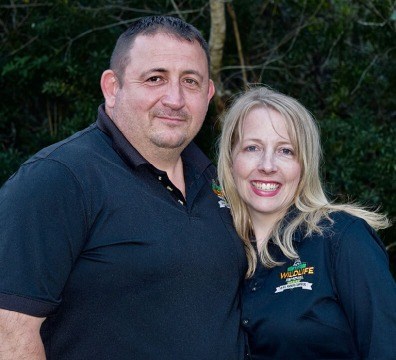Venomous Snakes in Houston
Copperhead Snakes
Copperhead snakes (Agkistrodon contortrix) are pit vipers, light brown in color with dark bands going across their backs. Though their bites aren’t known to kill anyone, the pain from their bite is said to feel like “hitting your hand with a hammer,” “being stabbed with a knife”, or a “bee sting times 1000”, which is pretty painful. Copperhead snakes like to reside in wooded areas and hide under brush or rocks.
Though their bite isn’t typically lethal, always go to the hospital when being bitten. With the warming up of temperatures copperheads will soon be breeding; with breeding season occurring in late summer. They average between 4 and 7 babies, however they can have up to 20 babies or as few as one. Babies are normally around 20 cm long at birth and are a lot brighter than its parents.
An interesting fact about copperheads: its venom contains what’s called “contortrostatin” which has been used in labs and tested on mice. It has been found that “contortrostatin” has halted the growth of cancer cells in mice and also stops the migration of tumors to travel to other areas of the body. However, this is only been conclusive in animal labs and has not yet been tested on humans.
Western Cottonmouth (Water Moccasin) Snakes
These snakes are most commonly referred to by Texans as “water moccasins” and they are highly feared, especially on family vacations to the lake. Dark brown/black in color, the water moccasin also has markings along their back. They are very aggressive snakes, and unlike the copperhead that stays still, the water moccasin will strike at any victim; however, they normally don’t attack unless provoked.
Unlike the copperhead, the bite from a water moccasin is very dangerous and can be lethal. Its venom can destroy blood cells and tissues and create blood clotting which leads to hemorrhages. Symptoms include, but are not limited to, bleeding, feebleness, trouble breathing, swelling, exhaustion, numbness, vomiting, nausea, reduced blood pressure, skin discoloration and increased thirst. Do not hesitate if you get bitten by a water moccasin; go straight to the emergency room.
Rattlesnakes
Most people know exactly what a rattlesnake looks like; or know what it comes equipped with- it’s rattler. Though there aren’t many in Harris County there are still several different varieties of rattlesnakes near Galveston. Besides its rattler, a rattlesnake is a light tan color with dark v-shaped patterns along its back.
The venom of a rattlesnake is known to paralyze its prey and can destroy blood cells, as a water moccasin’s venom does. Females fertilize and produce an egg that is hatched inside it. She can usually have between 5 and 12 snakes which are born highly functional and already equipped with a single rattle, fangs and venom.
The most common symptom with a rattlesnake bite other than pain is extreme fluid retention and swelling of limbs. If not treated quickly and efficiently, limbs may need to be amputated.
Texas Coral Snakes
“Red to yellow, kill a fellow; red to black, venom lack,” that’s always the clever phrase to remember when coming across these bright, colorful snakes. Unlike the snakes mentioned before, at first, when bitten by a Coral snake, there is little to no pain; however it’s the worst of the 4 snakes.
If left untreated, its victim can experience blurred speech, double vision, and paralysis which eventually lead to cardiac failure, and death. However, because they must “chew on their victim” in order to inject their venom efficiently, most victims don’t die from a bite. Coral snakes actually lay their eggs, around 6 or 7, and at birth babies can be around 7 inches long and brightly colored.








